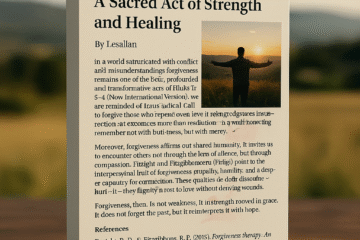By Lesallan – September 21, 2024
Exodus 25-31; 35:1-40:33 (ESV) Division Survey
Version: ESV
MAJOR STRUCTURAL RELATIONSHIPS
Unique and detailed instructions for the construction of the Tabernacle and its furnishings set them apart in their significance and complexity.
Observation
In this section of the book, you will find a comprehensive and detailed description of the materials, dimensions, and intricate design of the Tabernacle. It delves into the significance of each element, providing detailed information about the construction of the Ark of the Covenant, including the type of acacia wood used, the exact dimensions, and the overlay of pure gold. Similarly, it explores the Table for Bread, elucidating on the specific materials used, the dimensions, and the intricate craftsmanship involved. The section also thoroughly examines the Lampstand, including the design, materials, and its symbolic significance within the Tabernacle. Furthermore, it offers an in-depth exploration of the Altar of Incense, discussing its construction, dimensions, and the specific types of incense used in religious ceremonies (Exodus 25:1-31:18, ESV).
Why are these detailed instructions significant?
The detailed instructions from Exodus 25:8-9 (ESV) underscore the profound importance of the Tabernacle as a sacred dwelling place for God among His people. These instructions highlight the need for precision and obedience in worship, reflecting the reverence and honor due to the divine presence. The intricate design of the Tabernacle, including the specific materials and dimensions outlined in later verses, demonstrates the intentionality and purpose behind the construction, symbolizing the Israelites’ commitment to honoring and worshipping God in a manner befitting His glory. More importantly, this sacred space served as a physical representation of God’s presence among His people, fostering a sense of awe and reverence. It also provided a tangible focal point for communal worship and spiritual connection.
How do these instructions reflect God’s character?
The passage found in Exodus 25:22 (ESV) in the English Standard Version of the Bible emphasizes the significance of God’s instructions, which reflect His holiness, orderliness, and His desire for a meaningful relationship with His people. This verse specifically refers to God’s command to construct the Ark of the Covenant and how He would meet with Moses and speak to him from above the mercy seat on the ark. It highlights the importance of following God’s guidance and the profound significance of maintaining a close and intimate connection with Him.
The appointment of skilled craftsmen and the emphasis on Sabbath observance.
Observation
The biblical passage in question, Exodus 31:1-18 in the English Standard Version (ESV), recounts the moment when God appointed Bezalel and Oholiab to oversee the construction of the Tabernacle. This passage emphasizes the divine selection of skilled individuals for specific tasks within the community. Furthermore, it highlights the significance of honoring the Sabbath as a tangible symbol of the enduring covenant between God and the people of Israel, emphasizing the sacred commitment and mutual relationship between them.
What is the significance of appointing skilled craftsmen?
The appointment of skilled craftsmen underscores the value of using one’s talents for God’s work and the importance of craftsmanship in worship. This is exemplified in Exodus 31:2-6 (ESV), where individuals are chosen and gifted by God with the ability to work in various crafts. This passage highlights the significance of utilizing one’s skills and craftsmanship in service to a higher purpose. It emphasizes the idea that our talents can be used to honor and glorify God, whether it be through creating beautiful art for worship spaces or contributing to the community through our unique abilities.
Why is the Sabbath mentioned in this context?
The Sabbath reminder, rooted in the biblical passage Exodus 31:12-17 (ESV), emphasizes the significance of observing a day of rest and worship amidst the hustle and bustle of our daily lives. This practice reflects the divine rhythm of work and rest established by God. It serves as a poignant reminder that, even in the midst of crucial tasks and responsibilities, setting aside time for rest and spiritual connection is vital for our overall well-being.
Theological Significance of the Tabernacle
Observation
The Tabernacle powerfully represents God’s desire to be close to His people. It serves as a tangible symbol of His covenant with Israel, signifying His presence in their midst. The intricate design and construction of the Tabernacle highlight the care and detail that went into creating a place where God could dwell among His people. It also provides a framework for understanding how the Israelites could approach and worship God, emphasizing the importance of holiness and reverence in their interactions with the divine.
What is the importance of the Tabernacle?
This passage highlights the significance of the Tabernacle as a forerunner to the Temple and, ultimately, as a representation of God’s presence among His people through Jesus Christ and the Holy Spirit (Exodus 25:8-9, 29:45-46). It showcases the profound concept of God dwelling among His people and foreshadows the ultimate fulfillment of this idea through the presence of Jesus Christ and the Holy Spirit.
The Role of the Priests
Observation
The instructions for the priests’ garments and their consecration in the book of Exodus emphasize the significant role of the priests as mediators between God and the people (Exodus 28:1-43, 29:1-46). This underscores the importance of their role in facilitating the connection and communication between the divine and the community.
What is the significance of the Priest?
This statement underscores the vital significance of holiness and purity for individuals who are called to serve in the presence of God. It encapsulates the idea that those who serve in a spiritual capacity must embody qualities of mediation and atonement, emphasizing the need for purity of heart and intention in carrying out their responsibilities.
The Covenant Relationship
Observation
The reiterated focus on the observance of the Sabbath and the meticulous guidelines for the construction of the Tabernacle in the book of Exodus serve to underscore the solemn covenant relationship between God and the nation of Israel. This emphasis is evident in the passages found in Exodus 31:12-17 and 35:1-3 (ESV), where God’s specific instructions regarding the Sabbath observance and the construction of the Tabernacle highlight their significance within the covenant between God and the people of Israel.
Why is this relationship meaningful?
This relationship is founded on faithful adherence to God’s commands and sincere worship of Him. The quoted text emphasizes the foundational importance of Israel’s identity and purpose as God’s chosen people. This concept is central to Israel’s religious and cultural heritage, reflecting a deep-seated belief in divine election and a unique role in the world.
The Concept of Holiness
Observation
The detailed instructions and specific materials outlined in the construction of the Tabernacle in Exodus 25:1-9 and 30:22-38 serve to underscore the concept of holiness. This meticulous attention to detail and the use of specific materials emphasizes the sacred and respectful nature of the Tabernacle. Every aspect of its construction was carefully prescribed, reflecting the significance of creating a space that embodies holiness and serves as a dwelling place for the divine presence.
What is the significance, and what does this reflect?
The text emphasizes that God’s holiness should be regarded with reverence and purity when approaching Him. This emphasizes the clear division between the sacred and the mundane, underscoring the significance of upholding a profound sense of wonder and reverence in our connection with the divine.
Typology and Foreshadowing
Observation
The Tabernacle and furnishings hold deep symbolic meaning, serving as types and foreshadowing of Christ and His work. The Bible, particularly in passages such as Exodus 25:10-22 and 37:1-29, shows how the Tabernacle and its components symbolize various aspects of Christ’s ministry and redemption. For example, the Ark of the Covenant within the Most Holy Place represents God’s throne and His presence among His people, prefiguring the ultimate reconciliation made possible through Christ. The significance of these elements provides a rich and profound understanding of the connection between the Old Testament and the fulfillment of God’s plan through Christ in the New Testament, emphasizing the continuity and purpose of God’s redemptive work throughout history.
What does this signify, and what are the symbols?
The items within the Ark of the Covenant hold deep symbolic significance in the Judeo-Christian tradition. The Ark is regarded as a symbol of God’s earthly throne, signifying His presence among His people. The Lampstand, or menorah, within the Tabernacle represents Christ as the world’s light, illuminating the path of righteousness and truth. Additionally, the Altar of Incense symbolizes prayer and intercession, reflecting the believers’ direct communication with the divine. These symbols are profound reminders of faith, spirituality, and the connection between humanity and the sacred.
OUTLINE:
I. Instructions for the Tabernacle (Exodus 25:1-31:18, ESV)
A. Contributions for the Sanctuary (25:1-9, ESV)
B. The Ark of the Covenant (25:10-22, ESV)
C. The Table for Bread (25:23-30, ESV)
D. The Lampstand (25:31-40, ESV)
E. The Tabernacle (26:1-37, ESV)
F. The Altar of Burnt Offering (27:1-8, ESV)
G. The Court of the Tabernacle (27:9-19, ESV)
H. Oil for the Lamp (27:20-21, ESV)
I. The Priests’ Garments (28:1-43, ESV)
J. The Consecration of the Priests (29:1-46, ESV)
K The Altar of Incense (30:1-10, ESV)
L. The Census Tax (30:11-16, ESV)
M. The Bronze Basin (30:17-21, ESV)
N. The Anointing Oil and Incense (30:22-38, ESV)
O. Bezalel and Oholiab (31:1-11, ESV)
P. The Sabbath (31:12-18, ESV)
II. Construction of the Tabernacle (Exodus 35:1-40:33, ESV)
A. Sabbath Regulations (35:1-3)
B. Contributions for the Tabernacle (35:4-29)
C. Construction of the Tabernacle (35:30-36:38)
D. Making the Ark (37:1-9)
E. Making the Table (37:10-16)
F. Making the Lampstand (37:17-24)
G. Making the Altar of Incense (37:25-29)
H. Making the Altar of Burnt Offering (38:1-7)
I. Making the Bronze Basin (38:8)
J. Making the Court (38:9-20)
K. Materials for the Tabernacle (38:21-31)
L. Making the Priestly Garments (39:1-31)
M. Moses Inspects the Tabernacle (39:32-43)
I. N. Setting Up the Tabernacle (40:1-33)
LITERARY FORMS
Exodus chapters 25-31 and 35:1-40:33 (ESV) primarily feature descriptive and technical instructions for building the Tabernacle. These chapters outline precise measurements, materials, and procedures, emphasizing the importance of worship and God’s presence among His people. The detailed instructions and descriptions are presented in a straightforward prose narrative form. The commands and instructions given by God to Moses are examples of discursive texts, emphasizing logical and orderly communication. These chapters provide detailed specifications for the construction of the Tabernacle, its furnishings, and the priestly garments, underscoring the meticulous nature of God’s instructions and the need for obedience and reverence in worship. Amidst the instructions, there is a narrative interlude recounting the incident of the golden calf (Exodus 32-34, ESV). This return to the narrative style contrasts the preceding and following instructions, highlighting the consequences of disobedience and the need for repentance and restoration. Understanding these literary forms helps us appreciate the multifaceted nature of Exodus and its theological depth. It reminds us of the importance of worship, obedience, and God’s presence among His people.
OTHER MAJOR IMPRESSIONS
• The Tabernacle powerfully reminds us of God’s unwavering desire to be present among His people, symbolizing His constant presence and love for us.
• The meticulous instructions in the text highlight the profound significance of obedience and reverence in worship. This underscores the idea that obedience is not just about following rules but also expresses profound reverence and respect. It emphasizes the notion that true worship involves outward actions and an inner attitude of humility and submission. This serves as a reminder that worship is not just a ritual but a heartfelt expression of devotion and reverence towards the divine.


